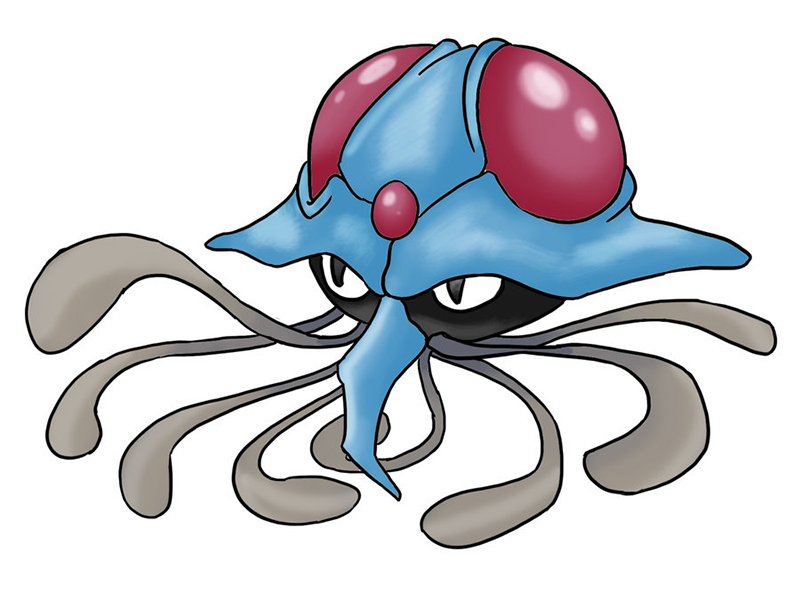
Judging by its real-world counterparts, Shellder shouldn’t necessarily have a hard time aiming its “Clamp” or “Razor Shell” attacks, hiding from someone else’s attacks, or swimming away from menacing foes. As far as we know, scallops can discriminate light from dark, spot surrounding algae, and perceive moving objects or obstacles (and react accordingly). They do have incredible eyes with a very intricate structure that allows them to measure amounts and intensity of light coming from different directions (Morton, 2008). These animals are found in all of the planet’s oceans and the family Pectinidae is in fact one of the largest marine bivalve families, including over 300 living species belonging to 60 genera (Waller, 2006). the scallops and their allies, are an amazing exception. And, curiously enough, the large eyes are actually not out of character: even though most bivalves have no eyes, the Pectinida, a.k.a. This small shell-bearing fellow is surely designed after a bivalve mollusk. With its googly eyes and what seems to be a hanging tongue, Shellder looks somewhat scared or mesmerized (or perhaps both). Images of real mollusks were extracted from Wikimedia Commons, except where otherwise noted credits are given in each figure’s caption. (2010, 2017) and WoRMS (World Register of Marine Species). The systematic classification of the mollusks used here follows Bouchet et al. Likewise, all information on the Pokémon (size, weight, and description of abilities and moves) were taken from their entries in Bulbapedia, considering only the game’s current generation (Gen VII). All the illustrations of the Pokémon reproduced here are the official art by Ken Sugimori and were extracted from Bulbapedia ( ). We analyze each mollusk Pokémon below they are listed in the same order as in the National Pokédex (this number is given with a “#” on each entry). Whenever possible, we outline specific features of the real animals that were transported to the games (such as types, moves, abilities, etc.). Thus, we indicate the real species or group that served as inspiration for the monsters and explain a little bit about their biology. Some of them were just broadly based on a larger group of mollusks, such as ‘octopuses’, while others seem to have been inspired by particular species. Most monsters in Pokémon are based on real animals (see, for instance, Tomotani, 2014 Mendes et al., 2017 Kittel, 2018), so the goal of this article is to present those based on mollusks. Also, there’s an eight generation of games on the horizon.
#Octopus pokemon series
More than 20 years later, the series is still strong, currently on the so-called seventh generation of core games, but counting with several other video games, an animated series, films, a card game, and tons of merchandise. One very famous game that features mollusks is Pokémon, a franchise that started with two games released by Nintendo for the Game Boy in 1996. The main groups of mollusks, however, are just three: Gastropoda, or gastropods, which include snails and slugs Cephalopoda, or cephalopods, which include squids and octopuses and Bivalvia, or bivalves, which include mussels and clams.Ĭurious creatures that they are, mollusks make nice “monsters” and are constantly being featured in video games (Cavallari, 2015 Salvador & Cunha, 2016 Salvador, 2017). Mollusks go from tiny snails less than a millimeter long to giant squids, almost 20 meters long and the largest known invertebrates. And there were other forms yet, which are now extinct: ammonoids, belemnites and rudists. They are also a very unique group in terms of body shapes (morphology), including extremely disparate forms: snails, slugs, clams, mussels, squids, octopuses, nautiluses, chitons, tusk shells, and the odd worm-like aplacophorans. Mollusks can be found in almost all sorts of habitats: land, freshwater and marine, including the deep sea and hot vents. As such, mollusks have long been considered the second most diverse group of animals – the first place belongs to arthropods. We do not yet know the precise number of species, since many are still unknown and being described every year. There are even some older fossils that could be mollusks, although their identity is still hotly debated among scientists. The phylum Mollusca appeared during the Cambrian Period, over 500 million years ago, alongside most other animal groups (including the Chordata, the group we belong to).

² Faculdade de Filosofia, Ciências e Letras de Ribeirão Preto, Universidade de São Paulo, Brazil.Įmails: (at) gmail (dot) com, dccavallari (at) gmail (dot) com

¹ Museum of New Zealand Te Papa Tongarewa, New Zealand.


 0 kommentar(er)
0 kommentar(er)
